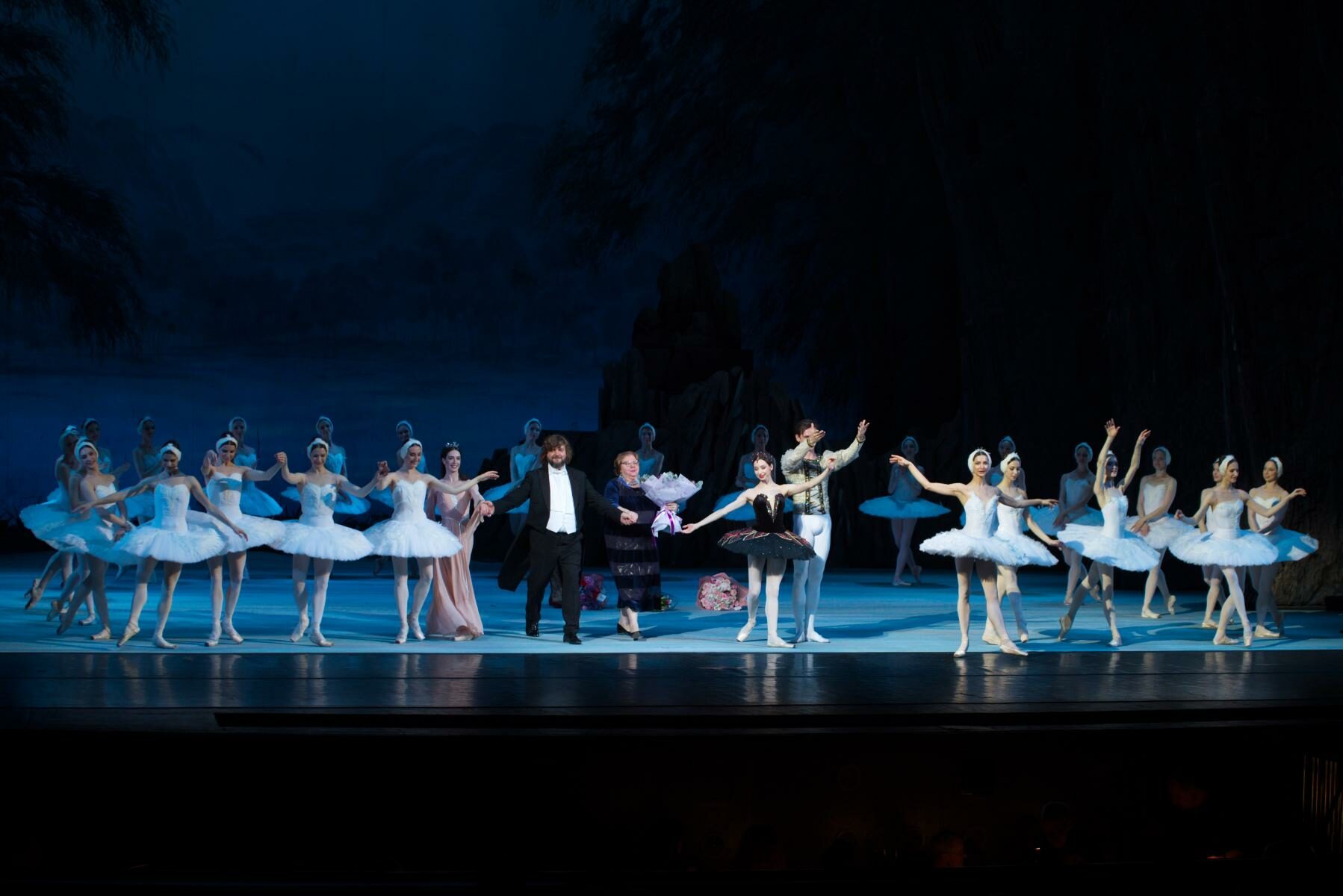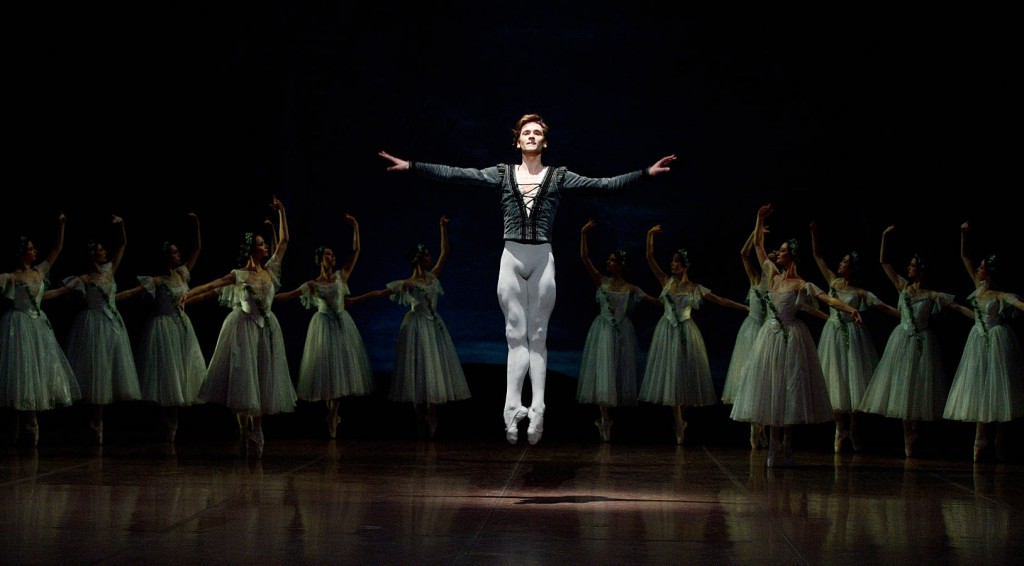Stuttgart Ballet
Stuttgart, Germany
March 2014
by Ilona Landgraf
Copyright © 2014 by Ilona Landgraf
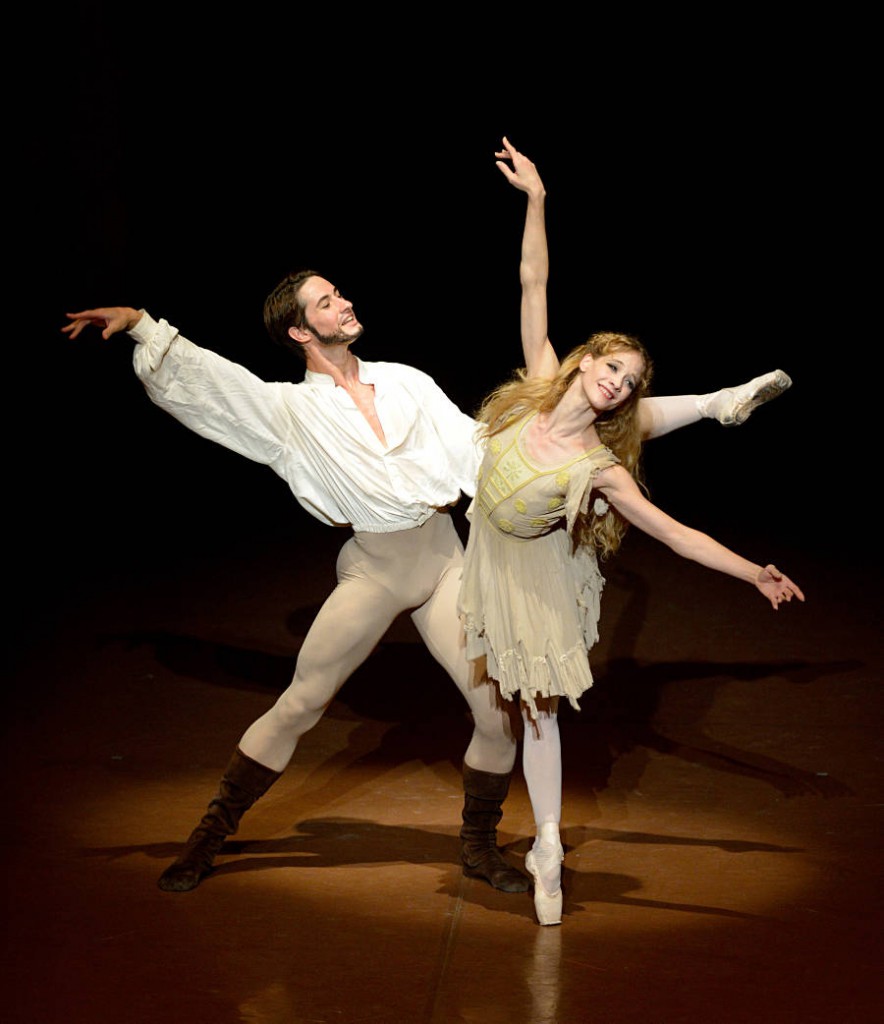 “Stuttgart Ballet” – the name conjures memories. The company became famous overnight in 1969 as ‘The Stuttgart Ballet Miracle’ following its visit to New York’s ‘Met’ (The Metropolitan Opera House). Luminous ballet stars like Marcia Haydée, Richard Cragun, Ray Barra, Egon Madsen, Vladimir Klos and Birgit Keil shaped the company. At the heart of things was John Cranko. The late director’s imprint remains present to this day on the walls of Stuttgart’s Opera House but above all on the minds and hearts of everyone. Since 1996, Reid Anderson has been at the helm of Germany’s flagship ballet troupe, which flourishes still today at the forefront of the dance world. Who are the dancers shaping Stuttgart Ballet now? Here are a few medallion portraits.
“Stuttgart Ballet” – the name conjures memories. The company became famous overnight in 1969 as ‘The Stuttgart Ballet Miracle’ following its visit to New York’s ‘Met’ (The Metropolitan Opera House). Luminous ballet stars like Marcia Haydée, Richard Cragun, Ray Barra, Egon Madsen, Vladimir Klos and Birgit Keil shaped the company. At the heart of things was John Cranko. The late director’s imprint remains present to this day on the walls of Stuttgart’s Opera House but above all on the minds and hearts of everyone. Since 1996, Reid Anderson has been at the helm of Germany’s flagship ballet troupe, which flourishes still today at the forefront of the dance world. Who are the dancers shaping Stuttgart Ballet now? Here are a few medallion portraits.
Alicia Amatriain, a Spaniard, currently is Stuttgart’s most versatile ballerina. In her prime technically, the thirty-three year old’s extensive repertory encompasses the most diverse of characters. The multifaceted Amatriain always immerses herself deeply in a role’s psychology, be it that of the hilarious Katharina (in Cranko’s The Taming of the Shrew) or the innocent Desdemona (in John Neumeier’s Othello). Amatriain intensifies dramatic atmospheres and stirs spectators’ emotions. Not only classic characters but modern women belong to Amatriain’s territory. She has relished working on new creations with many a choreographer (Marco Goecke, Demis Volpi, Christian Spuck and Douglas Lee among them).
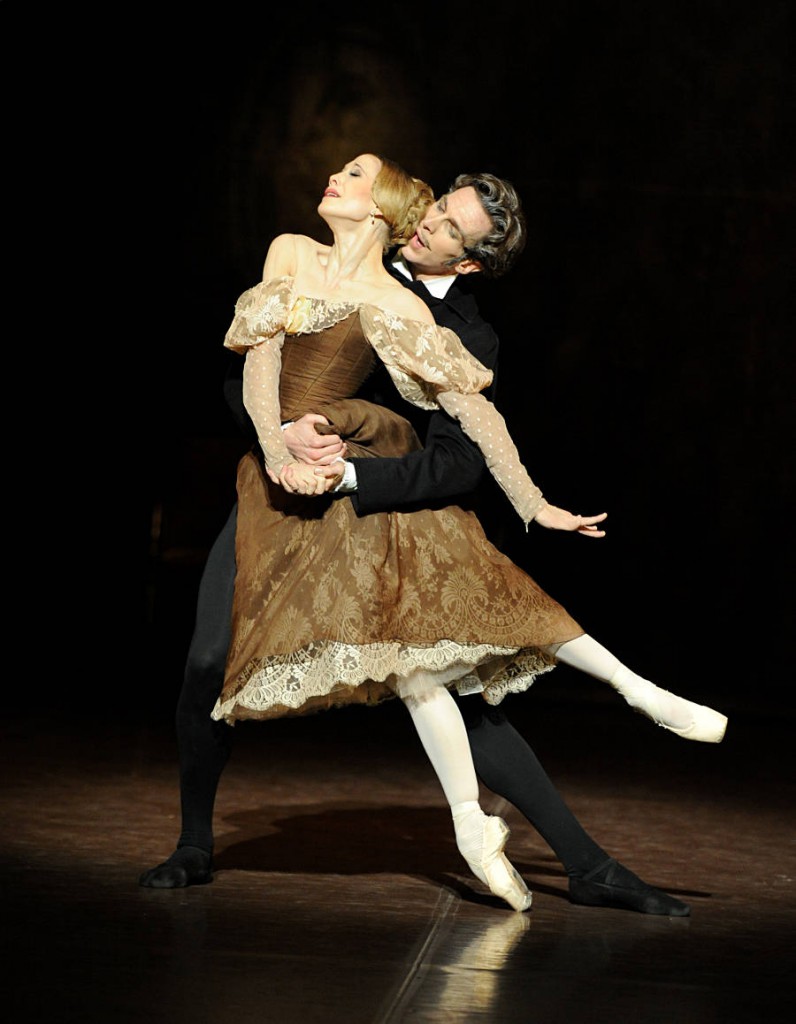
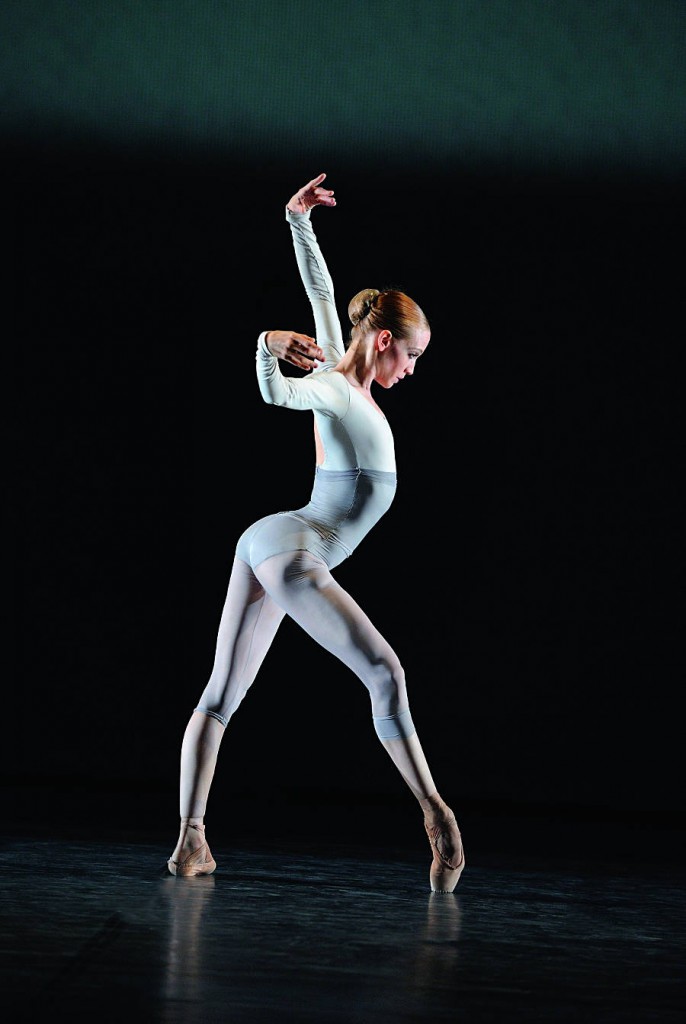 Amatriain’s impressive career began accidentally. When she was a child, her parents searched about for a leisure time activity for their daughter while they were still at work during afternoon hours. Although they chose ballet classes for her, it could as easily have been English lessons or gymnastics. No one in the family had a particular link to dance. Already at age eight, Alicia began to perform in the annual school recitals, dancing short pieces choreographed by her ballet teacher Peter Brown. That was the starting point. Then she joined The Conservatory in her home town of San Sebastian, where Stuttgart Ballet’s Sarah Abendroth spotted the twelve-year-old Amatriain. She was invited to continue her education at Stuttgart Ballet’s John Cranko School, but initially declined. It was two years later that she accepted the offer. Going abroad wasn’t easy for her at that young age, but she soon found herself integrated into the fellowship of the students there. (One of the other pupils was current Stuttgart Ballet star Friedemann Vogel.) Even so, she came close to quitting at one point but mastered her difficulties thanks to her mother’s support.
Amatriain’s impressive career began accidentally. When she was a child, her parents searched about for a leisure time activity for their daughter while they were still at work during afternoon hours. Although they chose ballet classes for her, it could as easily have been English lessons or gymnastics. No one in the family had a particular link to dance. Already at age eight, Alicia began to perform in the annual school recitals, dancing short pieces choreographed by her ballet teacher Peter Brown. That was the starting point. Then she joined The Conservatory in her home town of San Sebastian, where Stuttgart Ballet’s Sarah Abendroth spotted the twelve-year-old Amatriain. She was invited to continue her education at Stuttgart Ballet’s John Cranko School, but initially declined. It was two years later that she accepted the offer. Going abroad wasn’t easy for her at that young age, but she soon found herself integrated into the fellowship of the students there. (One of the other pupils was current Stuttgart Ballet star Friedemann Vogel.) Even so, she came close to quitting at one point but mastered her difficulties thanks to her mother’s support.
Amatriain understood early in life that achievement requires work and commitment. Dancers, she says, grow up more quickly and mature more rapidly than their non-dancing contemporaries. After graduation, Amatriain joined the Stuttgart company as 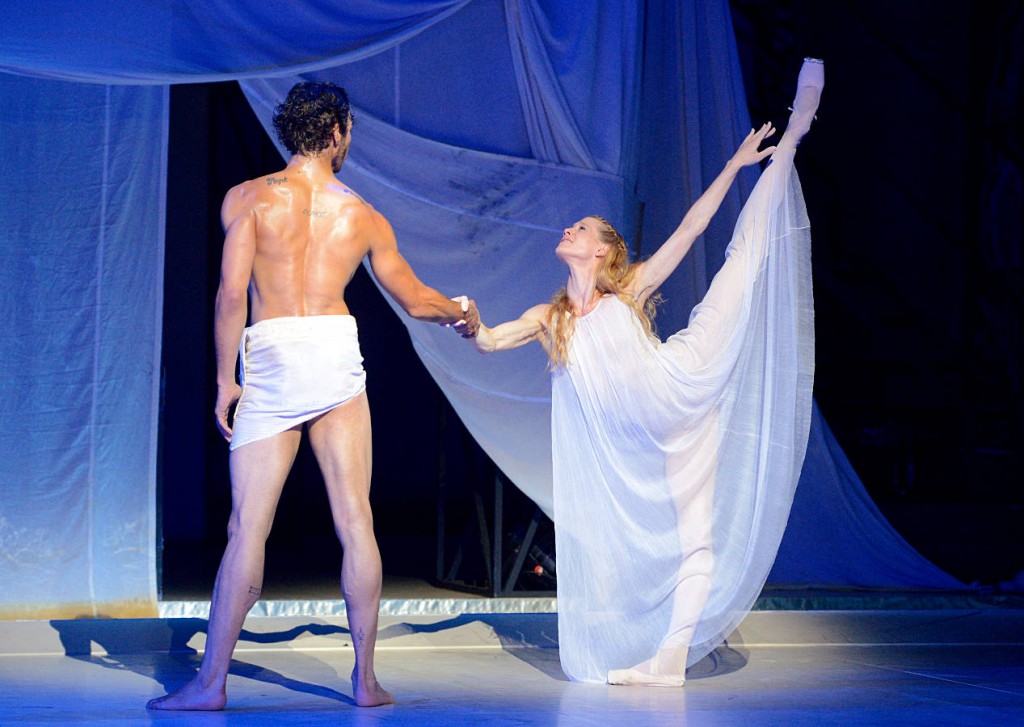 an apprentice in 1998. Finding herself comfortable on stage, she finally became convinced that she’d chosen the right path. One year later, she entered the corps de ballet and rose swiftly through the ranks. She was appointed principal dancer in 2002. Amatriain is far from flaunting airs despite being much in demand for galas and guest appearances all over the world. (Her own gala in San Sebastian two years ago was a thoroughgoing success.) Grounded and reflective, she says “I’m my own severest critic. Though I’m busier than I was early on, I feel more relaxed. Things didn’t become easier, but I have a clearer understanding. I have more life experience. Overcoming difficult times, dealing with injuries – all that has made me stronger.” Amatriain’s main driving force, however, is her absolute devotion to her art.
an apprentice in 1998. Finding herself comfortable on stage, she finally became convinced that she’d chosen the right path. One year later, she entered the corps de ballet and rose swiftly through the ranks. She was appointed principal dancer in 2002. Amatriain is far from flaunting airs despite being much in demand for galas and guest appearances all over the world. (Her own gala in San Sebastian two years ago was a thoroughgoing success.) Grounded and reflective, she says “I’m my own severest critic. Though I’m busier than I was early on, I feel more relaxed. Things didn’t become easier, but I have a clearer understanding. I have more life experience. Overcoming difficult times, dealing with injuries – all that has made me stronger.” Amatriain’s main driving force, however, is her absolute devotion to her art.
Stuttgart Ballet has something special, an aura, whose source Amatriain can’t pinpoint clearly. Probably it’s a mixture of Cranko’s spirit, Anderson’s way with leadership (marked by integrity and trust), great ballet masters like Tamas Detrich and Andria Hall, fabulous choreologist and coach Georgette Tsinguirides (of biblical knowledge and, despite being in her 80s, a bundle of energy) plus all the very kind Stuttgart colleagues with their strong feeling of togetherness. Also there is Marcia Haydée. She is a pivotal figure who regularly visits from Chile and still guests with the company. No wonder that Amatriain feels utterly comfortable being part of Stuttgart Ballet.
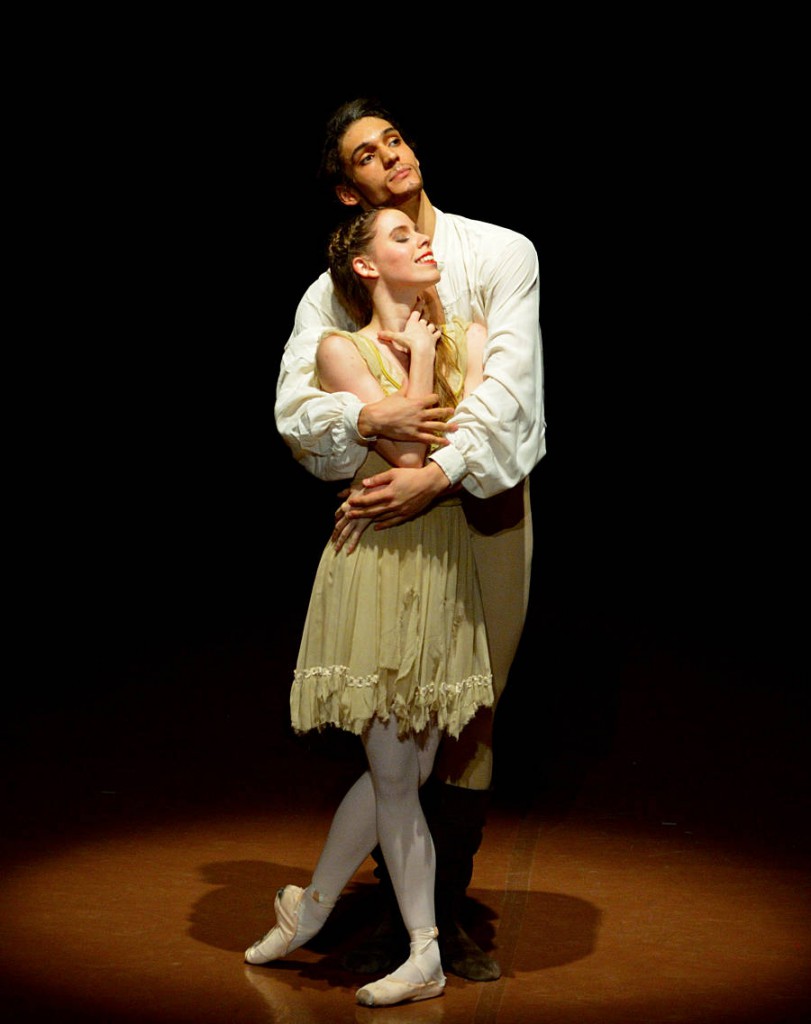 Elisa Badenes, twenty-two years old, is the company’s youngest principal. Hers is a feisty, charmingly cheerful nature. Stuttgart’s associate artistic director and ballet master Tamas Detrich, always on the lookout for talent, discovered Badenes at an audition of London’s Royal Ballet School and brought her to Stuttgart in 2009. Her rise has been meteoric. Starting as apprentice, she climbed up the ranks annually. This season she was appointed principal dancer.
Elisa Badenes, twenty-two years old, is the company’s youngest principal. Hers is a feisty, charmingly cheerful nature. Stuttgart’s associate artistic director and ballet master Tamas Detrich, always on the lookout for talent, discovered Badenes at an audition of London’s Royal Ballet School and brought her to Stuttgart in 2009. Her rise has been meteoric. Starting as apprentice, she climbed up the ranks annually. This season she was appointed principal dancer.
Badenes began her intensive ballet education as an eleven-year-old at The Conservatory in her hometown of Valencia, Spain. Back then she had already done rhythmic gymnastic for three years, which included a weekly ballet class. Badenes caught fire. It was at The Conservatory that ballet became her focus. For the following four years her days were well regulated: general schooling until 2 PM or, later, 5 PM. This was followed by ballet training until 10 PM – five days a week plus ballet on Saturday morning. Not many of her class kept up this rigorous routine, but in it Badenes found her passion. A 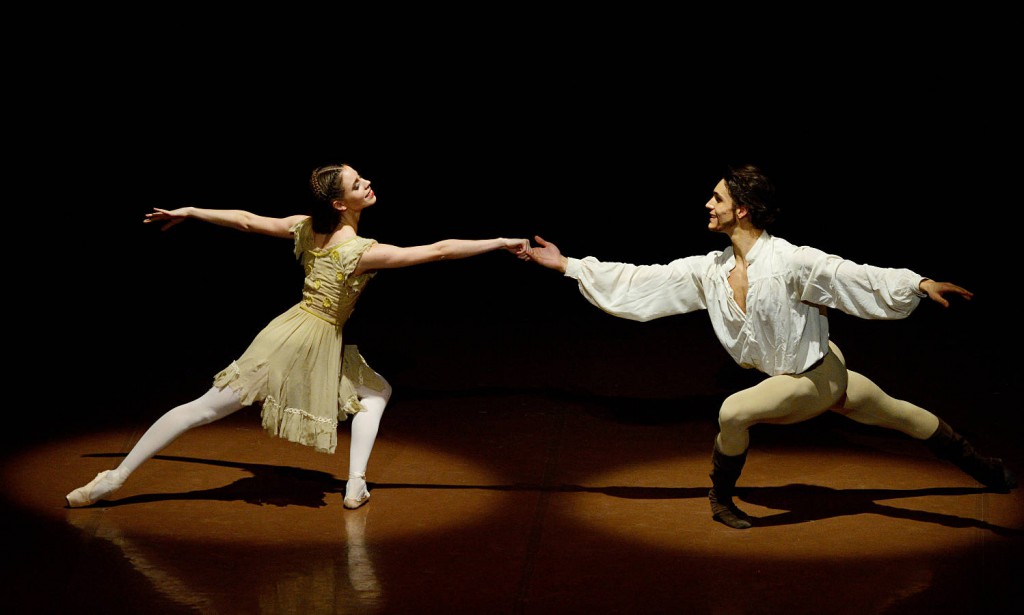 passion, she thinks, she was born with.
passion, she thinks, she was born with.
In 2008, the Prix de Lausanne gave Badenes a scholarship to Britain’s Royal Ballet School. Arrived in London, she felt as if she were living the Billy Elliot story! Valencia hadn’t offered much opportunity to see ballet and be in touch with professional dancers. Suddenly she found herself in a hive buzzing with dance, and with the Royal Ballet company just round the corner.
Stuttgart is no less a ballet town. The public’s excitement and respect for its ballet company is palpable. Badenes says that, “Many people know about our history, they know what’s going on in the company, and see us perform regularly – isn’t that great!” Recently, when dancing her first Katharina (in Shrew), Badenes was happy how much the audience had enjoyed her.
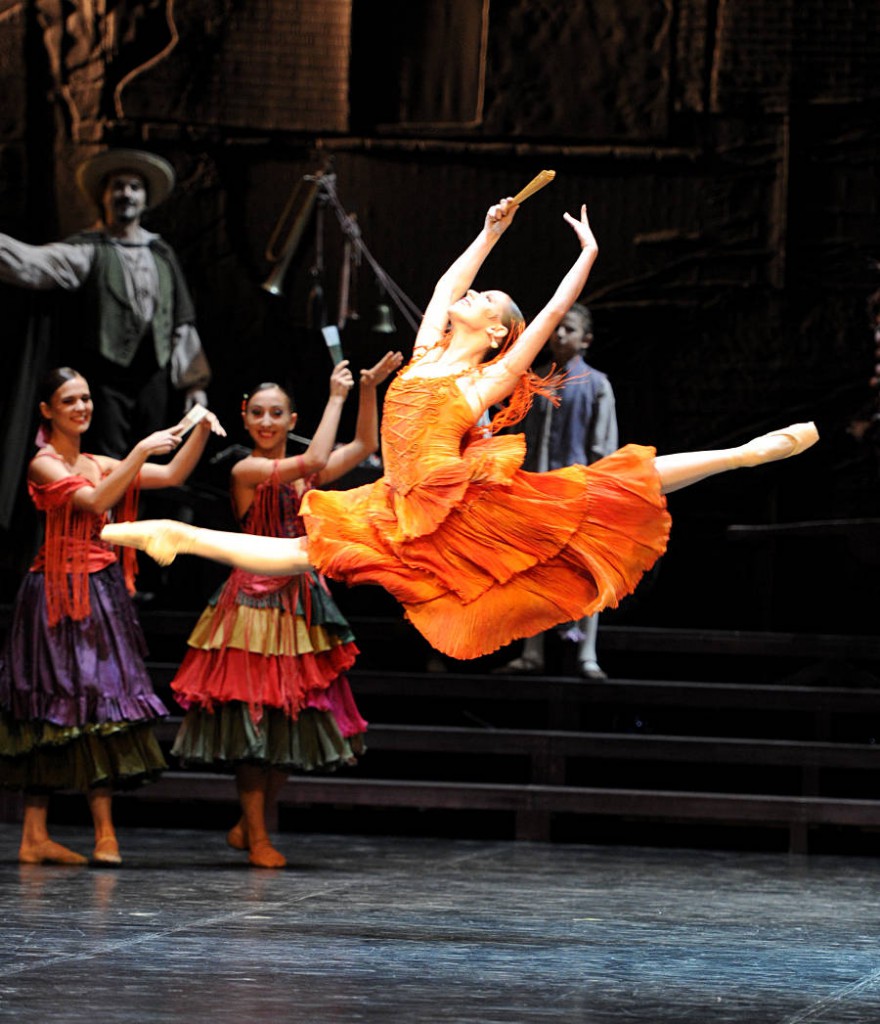
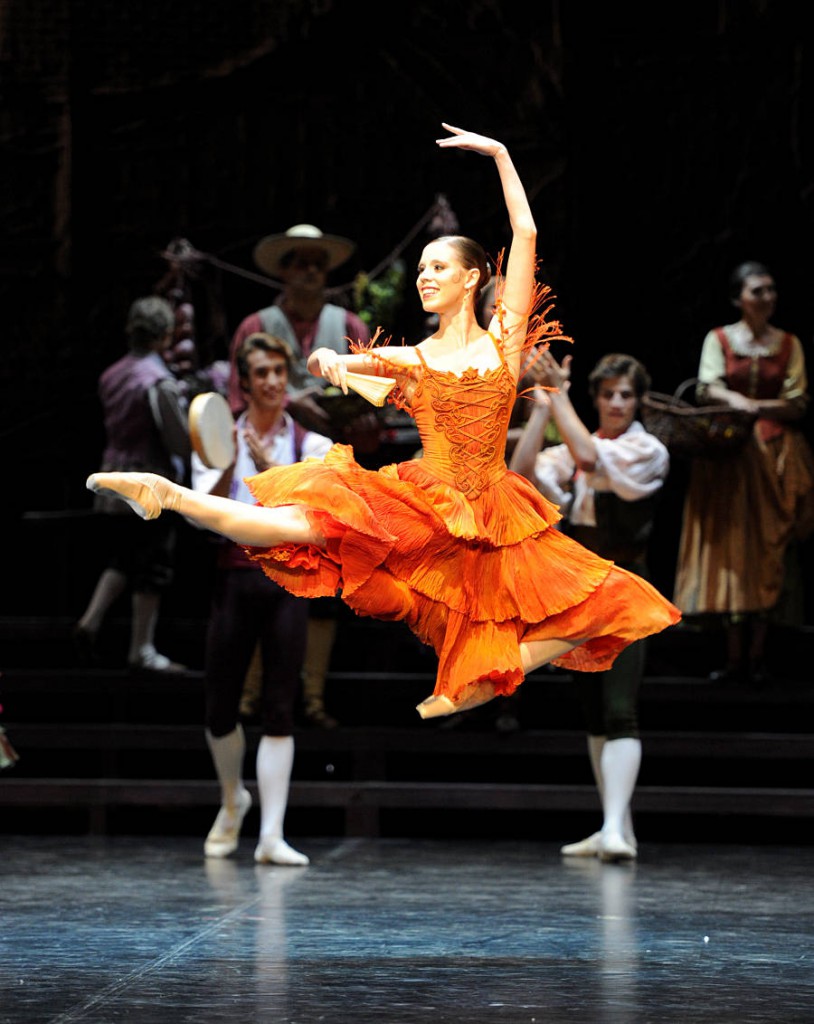 “Though they’ve seen these jokes many times before, every cast is different and they never tire of Cranko’s ballets.” Those who have seen her jaunty, confident Kitri (in Don Quixote) witnessed flirtatiousness and a peppery attack. In 2012, she guested in this role, alongside Daniel Camargo as Basilio, at the Australian Ballet’s 50th anniversary gala. The Stuttgart duo aroused such enthusiasm that they were asked to come back for two full performances of Don Quixote. “At school I was told that Kitri wouldn’t be my character. But I always felt comfortable with this role and wanted to do it. It is a part that has also shaped my character.” Badenes has a spontaneous, intuitive rather than analyzing approach to her roles. Blithely she recalls how she integrated a few movements into Kitri’s part from having watched her mother dancing flamenco. At family parties, Badenes remembers, her father played the guitar, her aunt sang and her mother danced. Maybe, Elisa and her two sisters – they’re triplets – will party in a like manner one day?
“Though they’ve seen these jokes many times before, every cast is different and they never tire of Cranko’s ballets.” Those who have seen her jaunty, confident Kitri (in Don Quixote) witnessed flirtatiousness and a peppery attack. In 2012, she guested in this role, alongside Daniel Camargo as Basilio, at the Australian Ballet’s 50th anniversary gala. The Stuttgart duo aroused such enthusiasm that they were asked to come back for two full performances of Don Quixote. “At school I was told that Kitri wouldn’t be my character. But I always felt comfortable with this role and wanted to do it. It is a part that has also shaped my character.” Badenes has a spontaneous, intuitive rather than analyzing approach to her roles. Blithely she recalls how she integrated a few movements into Kitri’s part from having watched her mother dancing flamenco. At family parties, Badenes remembers, her father played the guitar, her aunt sang and her mother danced. Maybe, Elisa and her two sisters – they’re triplets – will party in a like manner one day?
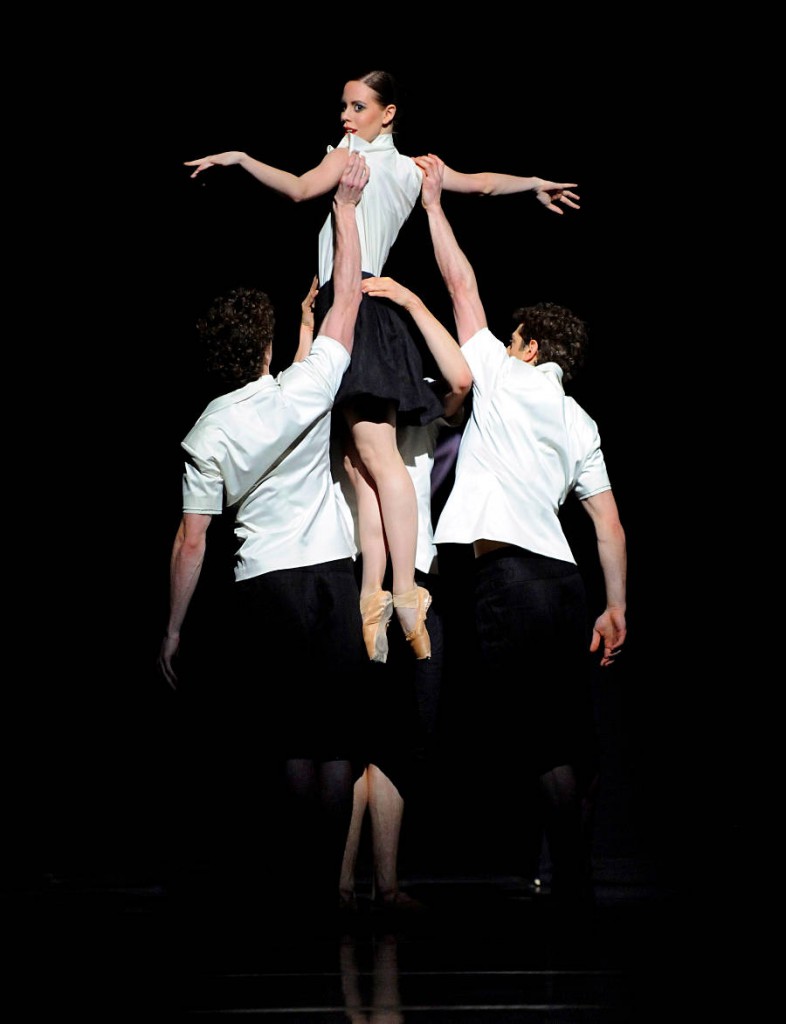
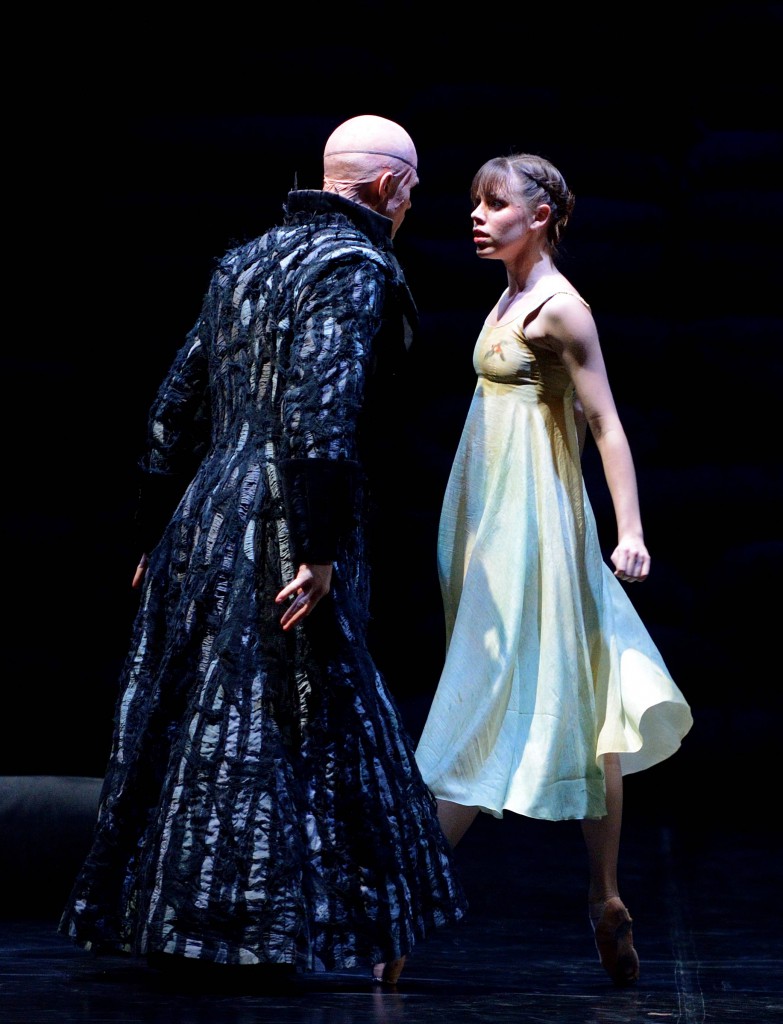 Quite another aspect of Badenes’s personality was brought out by Stuttgart Ballet’s resident choreographer, Demis Volpi, when he made Kantorka on her for his Krabat. Kantorka is a powerful yet plain girl, natural, determined, and with a loving spirit.
Quite another aspect of Badenes’s personality was brought out by Stuttgart Ballet’s resident choreographer, Demis Volpi, when he made Kantorka on her for his Krabat. Kantorka is a powerful yet plain girl, natural, determined, and with a loving spirit.
By now, Badenes has the professional level of which she had only a distant idea when starting out in Valencia. She knows, she has lots to do – exploring new roles (such as, recently, Neumeier’s Desdemona), which Stuttgart has aplenty, and making them her own.
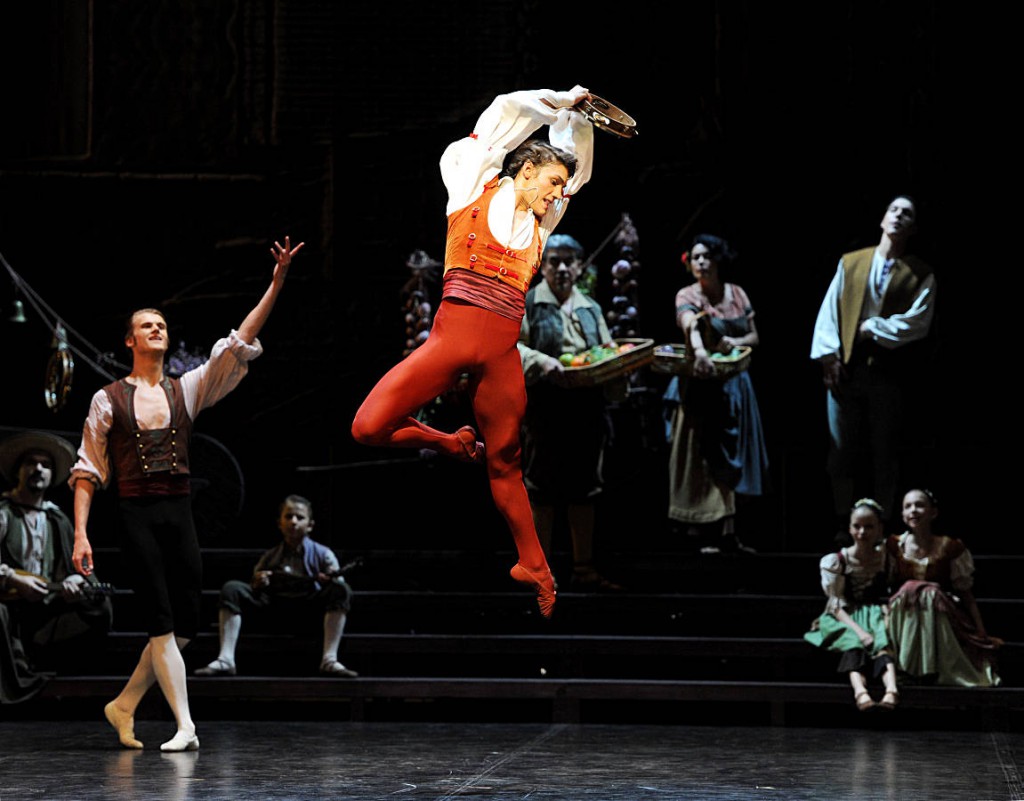 Daniel Camargo, born in 1991, is also a high flyer. Joining the corps de ballet in 2009, he was brilliant in his debut in Maximiliano Guerra’s production of Don Quixote. It earned him soloist status in 2012. Once again, artistic director Reid Anderson’s policy to give the young generation a chance, proved itself. Camargo’s Basilio and Badenes’s Kitri were celebrated as the stage’s new dream couple. Camargo, an elegant and stunningly strong jumper, lifted Badenes effortlessly on one hand as if were nothing. Both radiated infectious charm and cheer. They are often paired, and make a winning team. As Olga and Lenski (in Cranko’s Onegin), as Diana and Actaeon (Vaganova’s pas de deux) and in Little Monsters (a pas de deux Demis Volpi made for them, which won them the audience award at the Erik Bruhn Competition in 2012).
Daniel Camargo, born in 1991, is also a high flyer. Joining the corps de ballet in 2009, he was brilliant in his debut in Maximiliano Guerra’s production of Don Quixote. It earned him soloist status in 2012. Once again, artistic director Reid Anderson’s policy to give the young generation a chance, proved itself. Camargo’s Basilio and Badenes’s Kitri were celebrated as the stage’s new dream couple. Camargo, an elegant and stunningly strong jumper, lifted Badenes effortlessly on one hand as if were nothing. Both radiated infectious charm and cheer. They are often paired, and make a winning team. As Olga and Lenski (in Cranko’s Onegin), as Diana and Actaeon (Vaganova’s pas de deux) and in Little Monsters (a pas de deux Demis Volpi made for them, which won them the audience award at the Erik Bruhn Competition in 2012).
Earlier this season Camargo was promoted to principal.
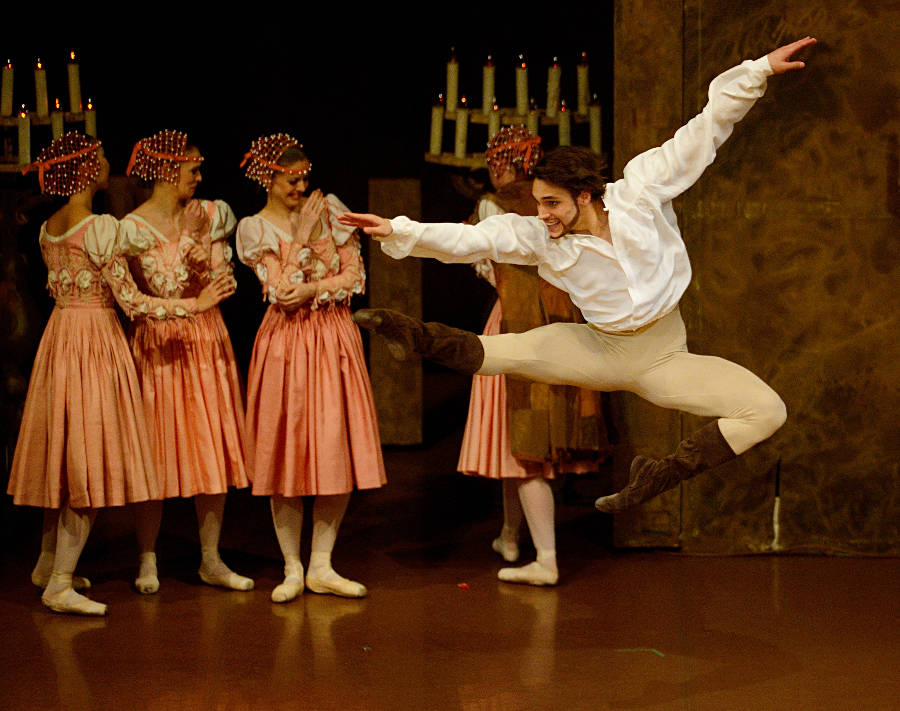
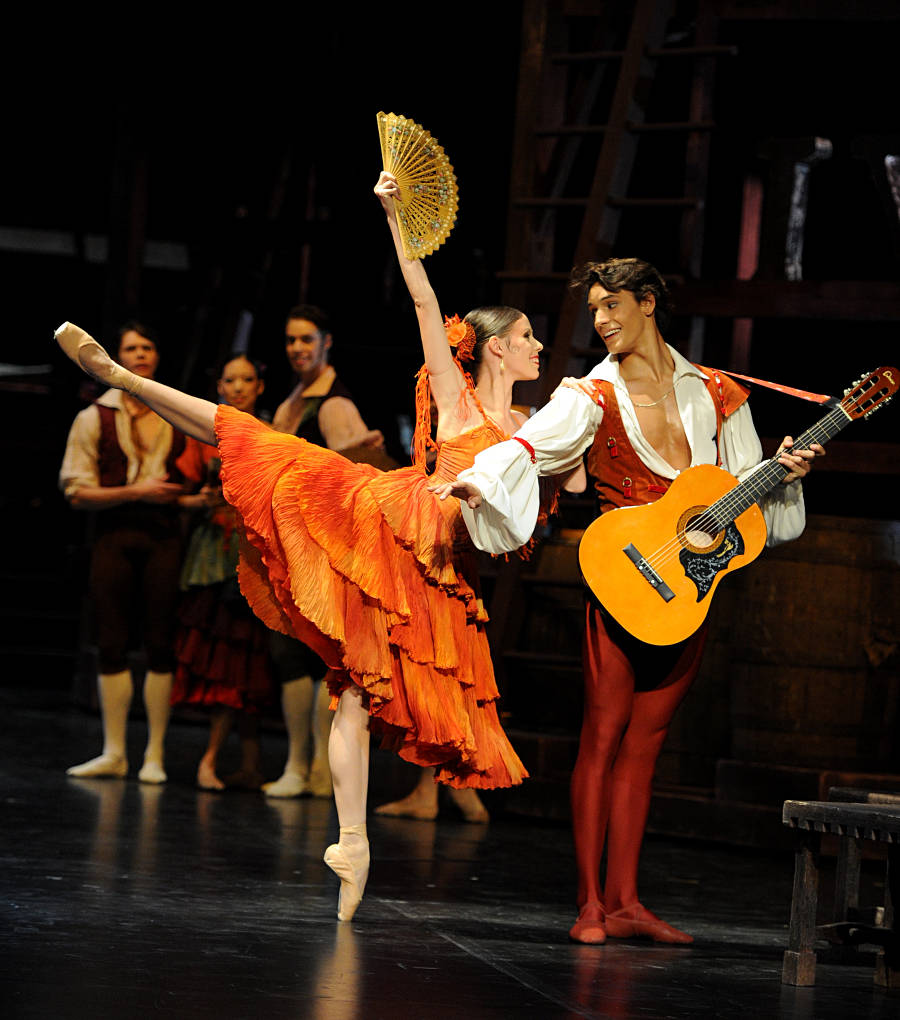 Born in Sorocaba, northwest of São Paulo, Brazil, Camargo encountered the ballet barre when he was nine years old. His two sisters took ballet classes and he used to watch their training and shows, but in fact was more attracted to hip-hop than to ballet. However, the ballet teacher diplomatically persuaded the boy to begin his training with ballet, which would provide him with a proper foundation for hip-hop later. What will be, will be – Camargo took to ballet! At first, though, he didn’t tell his friends. Boys aren’t considered for dance in Brazil, where everything revolves around football and other sports. “My real friends later understood and supported me”, he says. One year later, the family moved south to Curitiba, where his older sister was engaged in the Teatro Guaira company. Daniel and his second sister were enrolled at the ballet school attached to the company. Aged thirteen, he took part in the Youth American Grand Prix competition in New York for the second time. As he had the year before he won second prize in the junior section and scholarships for summer schools at American Ballet Theatre and the Harid Conservatory in Florida. Above all, though, he caught the eye of Tadeusz Matacz, director of Stuttgart’s John Cranko School. “We had to do a manège and all started clockwise in the first run. I’m left-handed and so I decided to wait for the second run to the left. But when I got ready to start, no other boy was left. I was ready to stop, but Tadeusz Matacz wanted to see me and thus I had the whole stage to myself. Maybe that tipped the scales.”
Born in Sorocaba, northwest of São Paulo, Brazil, Camargo encountered the ballet barre when he was nine years old. His two sisters took ballet classes and he used to watch their training and shows, but in fact was more attracted to hip-hop than to ballet. However, the ballet teacher diplomatically persuaded the boy to begin his training with ballet, which would provide him with a proper foundation for hip-hop later. What will be, will be – Camargo took to ballet! At first, though, he didn’t tell his friends. Boys aren’t considered for dance in Brazil, where everything revolves around football and other sports. “My real friends later understood and supported me”, he says. One year later, the family moved south to Curitiba, where his older sister was engaged in the Teatro Guaira company. Daniel and his second sister were enrolled at the ballet school attached to the company. Aged thirteen, he took part in the Youth American Grand Prix competition in New York for the second time. As he had the year before he won second prize in the junior section and scholarships for summer schools at American Ballet Theatre and the Harid Conservatory in Florida. Above all, though, he caught the eye of Tadeusz Matacz, director of Stuttgart’s John Cranko School. “We had to do a manège and all started clockwise in the first run. I’m left-handed and so I decided to wait for the second run to the left. But when I got ready to start, no other boy was left. I was ready to stop, but Tadeusz Matacz wanted to see me and thus I had the whole stage to myself. Maybe that tipped the scales.”
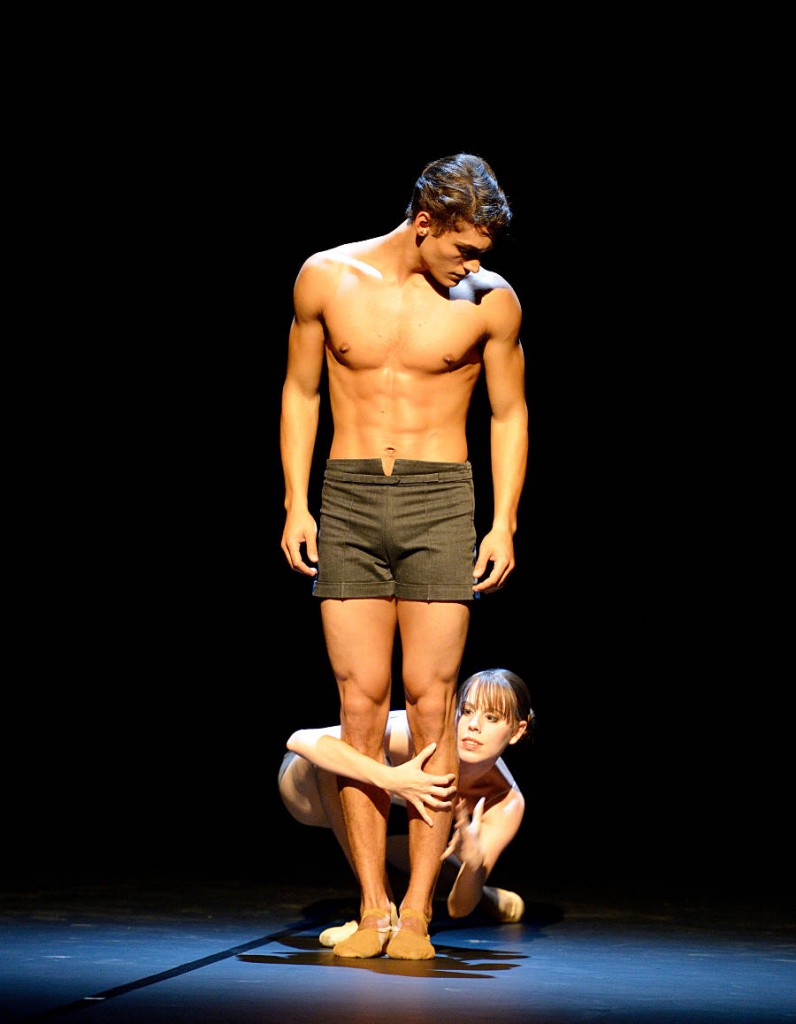
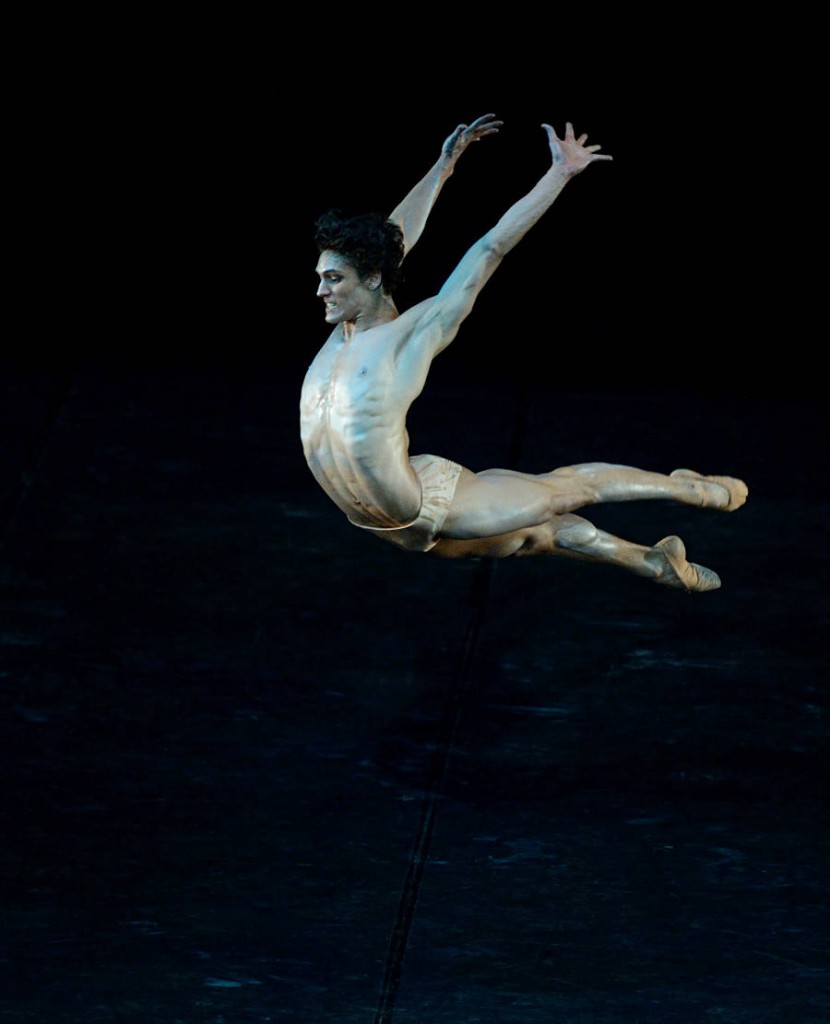 In any case, the offer was made that Camargo could finish his education at the John Cranko School. Arriving in Stuttgart in 2005, he neither spoke German nor properly English, but learned quickly. In addition, his knowledge of Russian was challenged because his new ballet teacher, the famous ex-Bolshoi artist Petr Pestov, spoke solely Russian in class. He honed Camargo’s strength and jumping technique and refined his musicality. The Brazilian loves jumps and turns – everything a male dancer can put his full power into – like The Chosen in Glen Tetley’s Le Sacre du Printemps, a rather athletic and very strenuous role. But Camargo’s heart beats even more for classical roles. Recently he danced his first Petrucchio in Shrew with aplomb. Currently he is preparing to be Albrecht in Giselle. Camargo’s stage experience is growing enormously! The stage is, more and more, like a living room for him. He enjoys being there and is able to relax more and more. Not even a short blackout during his solo in Krabat – Camargo danced the leading role – threw him. After two minutes of clever improvisation he found the thread again and no one in the audience noticed. Becoming an ever better actor and finding his own, personal interpretations, he will, he thinks, grow into the big roles step by step. In fact, he is advancing in seven-league boots! Last year he also put himself to the test as choreographer. Do outro lado, an explosive work rich in jumps for two males, successfully premiered at Stuttgart’s Noverre evening.
In any case, the offer was made that Camargo could finish his education at the John Cranko School. Arriving in Stuttgart in 2005, he neither spoke German nor properly English, but learned quickly. In addition, his knowledge of Russian was challenged because his new ballet teacher, the famous ex-Bolshoi artist Petr Pestov, spoke solely Russian in class. He honed Camargo’s strength and jumping technique and refined his musicality. The Brazilian loves jumps and turns – everything a male dancer can put his full power into – like The Chosen in Glen Tetley’s Le Sacre du Printemps, a rather athletic and very strenuous role. But Camargo’s heart beats even more for classical roles. Recently he danced his first Petrucchio in Shrew with aplomb. Currently he is preparing to be Albrecht in Giselle. Camargo’s stage experience is growing enormously! The stage is, more and more, like a living room for him. He enjoys being there and is able to relax more and more. Not even a short blackout during his solo in Krabat – Camargo danced the leading role – threw him. After two minutes of clever improvisation he found the thread again and no one in the audience noticed. Becoming an ever better actor and finding his own, personal interpretations, he will, he thinks, grow into the big roles step by step. In fact, he is advancing in seven-league boots! Last year he also put himself to the test as choreographer. Do outro lado, an explosive work rich in jumps for two males, successfully premiered at Stuttgart’s Noverre evening.
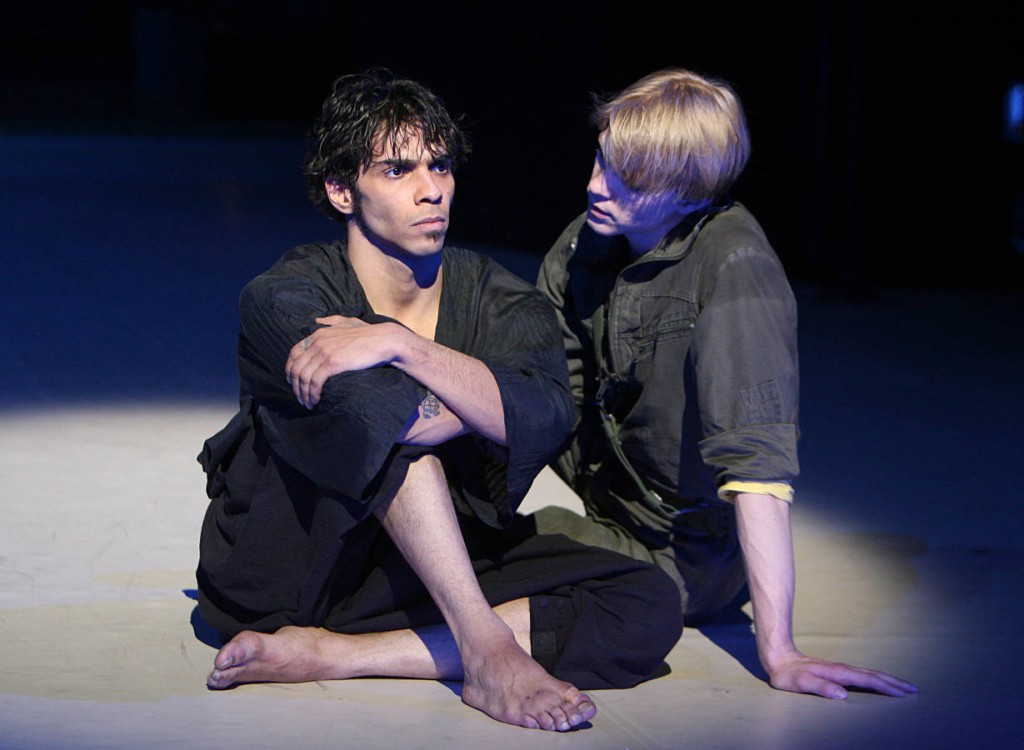 Good-humored Jason Reilly, Stuttgart’s all-rounder for classical and modern ballets as well, is a live wire, radiating a likeable positive energy. Apparently easy-going, he plumbs the depths of classical and dramatic roles to come out with touchingly intense interpretations. The thirty-four-year old’s repertory and the many roles created for him (for example, around fifteen-years-old and still studying at school, John Neumeier worked with him on Yondering) make an impressively long and varied list. Canadian-born Reilly was fascinated by ballet when he was little. Accompanying his older brother, who took ballet class once a week, he was glued to the door of the studio. “They had to pull me away or I would slowly inch my way in. Once, my mum had talked with other parents and when she started looking for me, she found me sitting entranced next to the ballet teacher.” At age five he joined the National Ballet School of Toronto, but was “kicked out for biting girls.”
Good-humored Jason Reilly, Stuttgart’s all-rounder for classical and modern ballets as well, is a live wire, radiating a likeable positive energy. Apparently easy-going, he plumbs the depths of classical and dramatic roles to come out with touchingly intense interpretations. The thirty-four-year old’s repertory and the many roles created for him (for example, around fifteen-years-old and still studying at school, John Neumeier worked with him on Yondering) make an impressively long and varied list. Canadian-born Reilly was fascinated by ballet when he was little. Accompanying his older brother, who took ballet class once a week, he was glued to the door of the studio. “They had to pull me away or I would slowly inch my way in. Once, my mum had talked with other parents and when she started looking for me, she found me sitting entranced next to the ballet teacher.” At age five he joined the National Ballet School of Toronto, but was “kicked out for biting girls.”
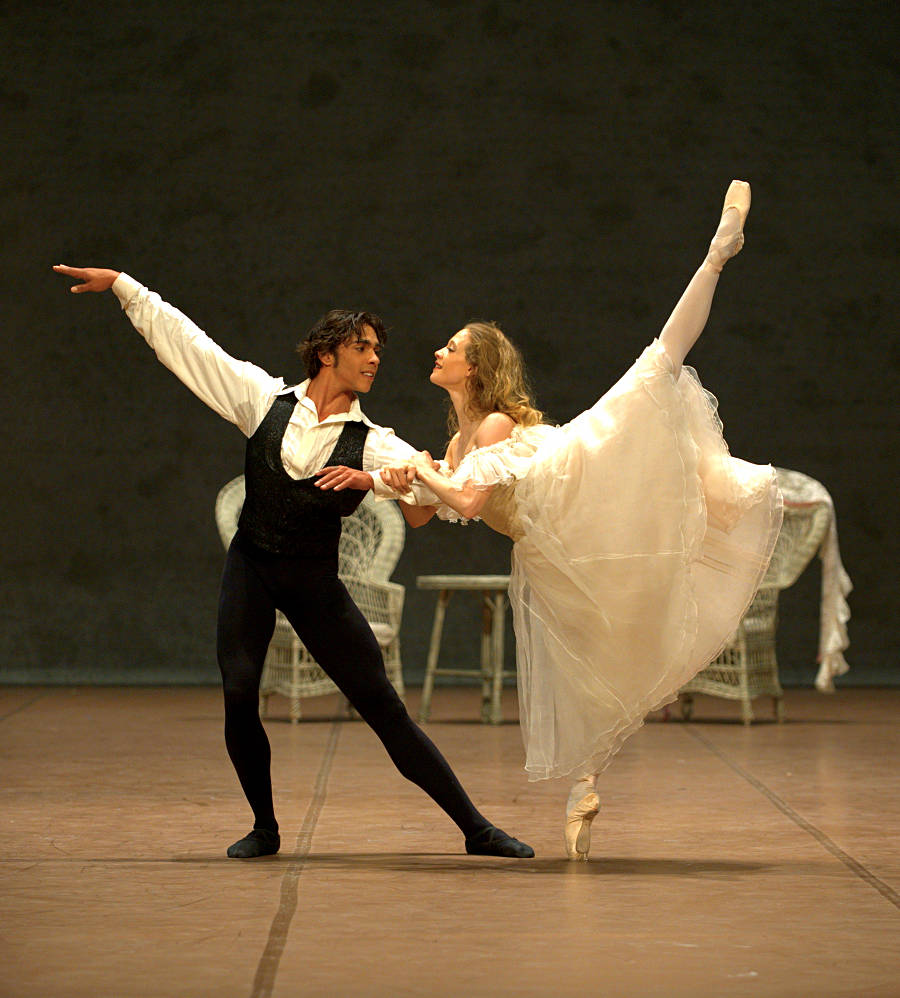
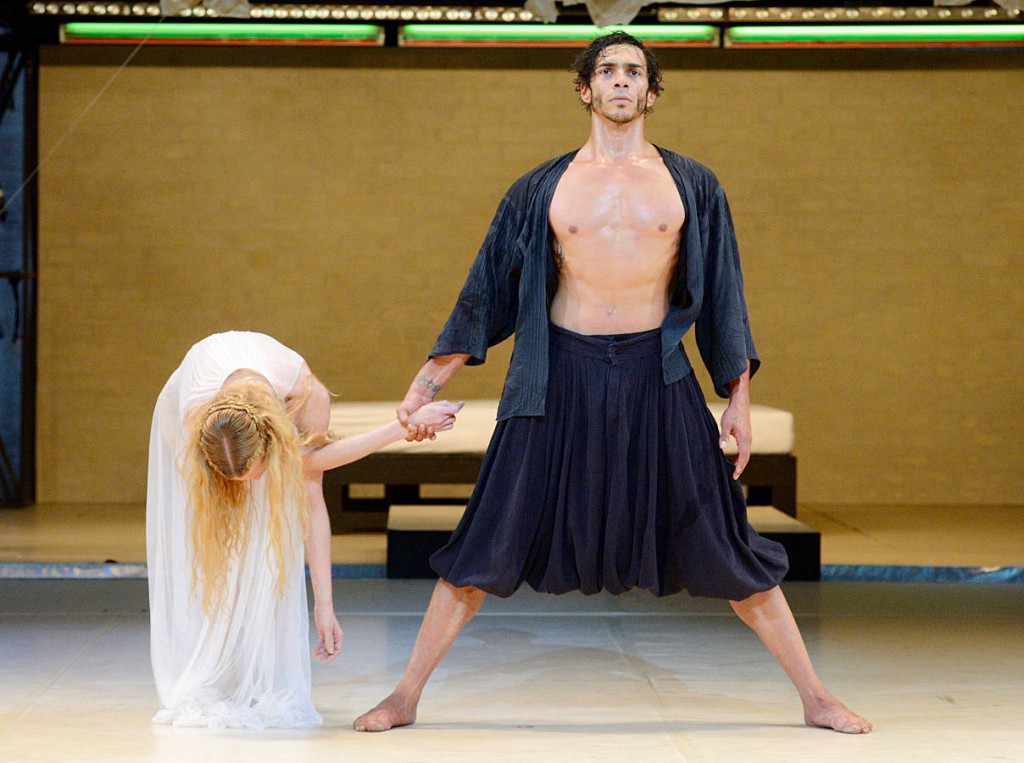 The school suggested waiting until Jason would be a bit older. He wrote letters of apology and was luckily re-enrolled one year later. Reilly grew up watching how Toronto’s National Ballet
The school suggested waiting until Jason would be a bit older. He wrote letters of apology and was luckily re-enrolled one year later. Reilly grew up watching how Toronto’s National Ballet 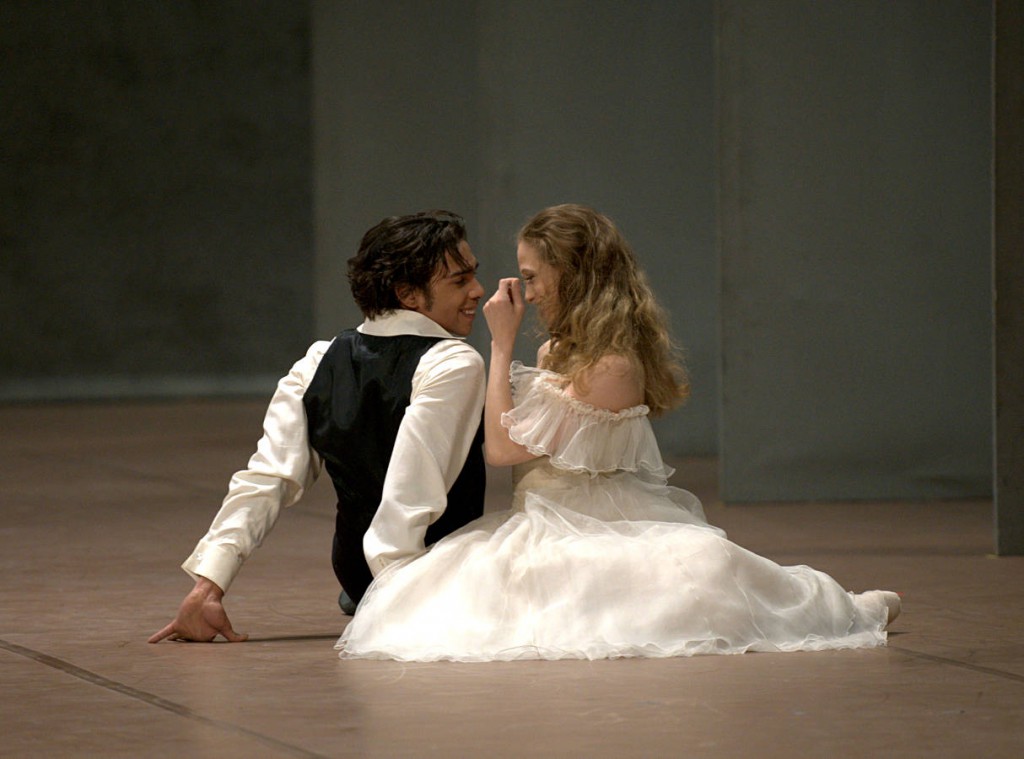 of Canada and its repertory evolved under the guidance of Reid Anderson, then NBC’s artistic director. “I wanted to work with Reid, wherever he would head to.” Shortly before leaving for Stuttgart Anderson conducted an audition at the National Ballet School. Reilly caught his eye and was invited to join Stuttgart Ballet after finishing school. However Reilly, who at that time had around two years left until graduation, knew his own mind. Thanks to a syllabus, specially designed for him and by going into residence at school he fast-tracked. ”It was hard work, but I had a goal – going to Stuttgart! And I wanted to have a high school diploma as well.” He had found his passion and had learnt how to channel his energy. One year later, in 1997, he did his first class with Stuttgart Ballet.
of Canada and its repertory evolved under the guidance of Reid Anderson, then NBC’s artistic director. “I wanted to work with Reid, wherever he would head to.” Shortly before leaving for Stuttgart Anderson conducted an audition at the National Ballet School. Reilly caught his eye and was invited to join Stuttgart Ballet after finishing school. However Reilly, who at that time had around two years left until graduation, knew his own mind. Thanks to a syllabus, specially designed for him and by going into residence at school he fast-tracked. ”It was hard work, but I had a goal – going to Stuttgart! And I wanted to have a high school diploma as well.” He had found his passion and had learnt how to channel his energy. One year later, in 1997, he did his first class with Stuttgart Ballet.
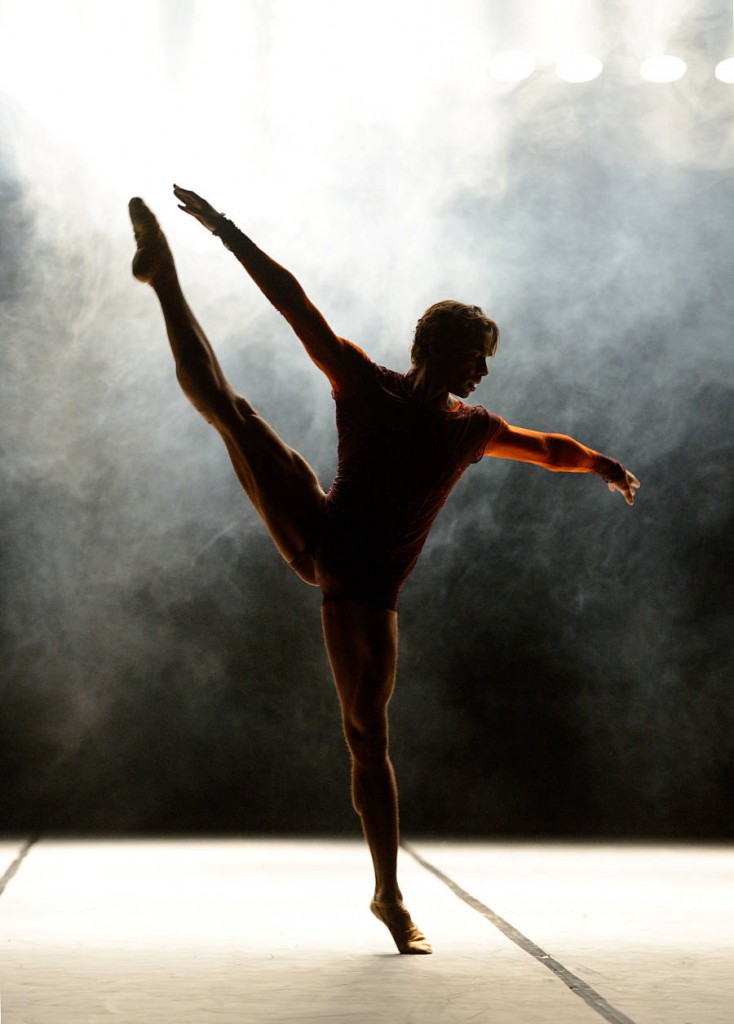
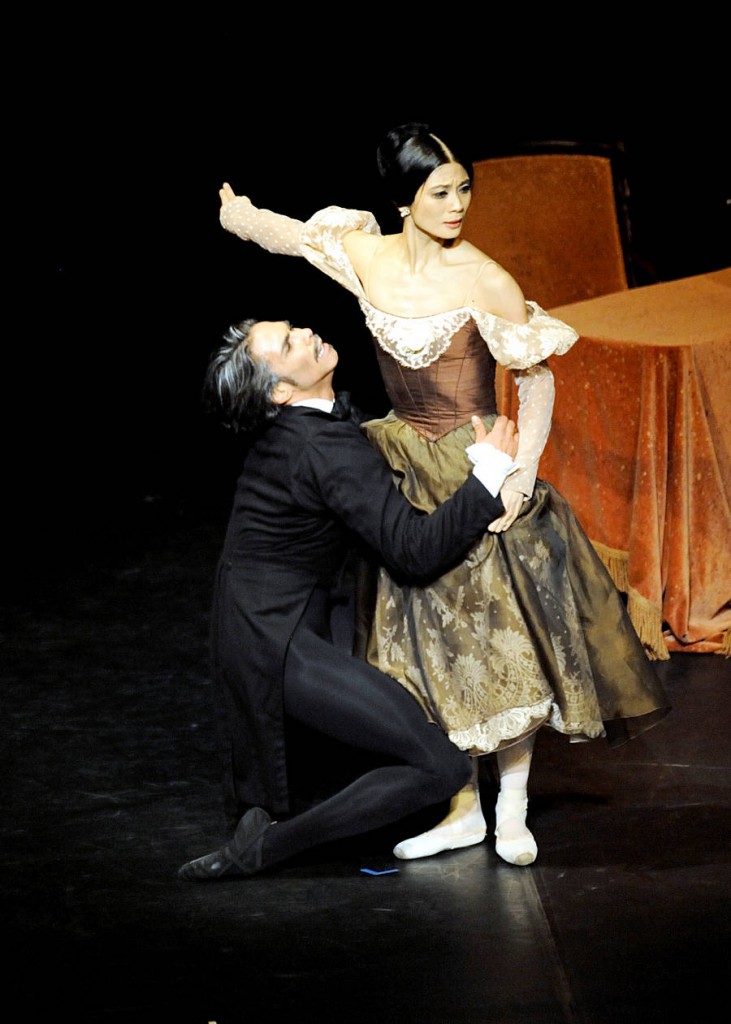 In Stuttgart there’s the opportunity – also the challenge – to constantly improve one’s skills: ”I can do a little bit bigger, bend a bit more, push the limits.” Reilly loves the creative process, the revolving circle of inspiring the choreographer and being inspired oneself by the music. “That’s what I live for.”
In Stuttgart there’s the opportunity – also the challenge – to constantly improve one’s skills: ”I can do a little bit bigger, bend a bit more, push the limits.” Reilly loves the creative process, the revolving circle of inspiring the choreographer and being inspired oneself by the music. “That’s what I live for.”
He was fortunate, for example, to have be in almost all ballets of Neumeier that have been staged in Stuttgart: A Streetcar Named Desire, Lady of the Camellias, Othello and two smaller works. “I love the intensity of the way Neumeier works. He keeps me focused and we get a lot done until the end of the day.” Reilly considers himself as open, but not very eloquent in expressing his emotions. His tattoos, reminders of important moments in his life, are “like wearing my emotions on the sleeve”. Yet when on stage he’s masterfully apt to get emotions across. He likes to transform, to find and express different sides of himself. “When I danced Stanley Kowalski (A Streetcar Named Desire) people at the premiere party were like ‘I hate you right now!’. At first I got angry, but suddenly realized, that I must have done a pretty good job! I like this experiences and I like to have people see it and believe it.”
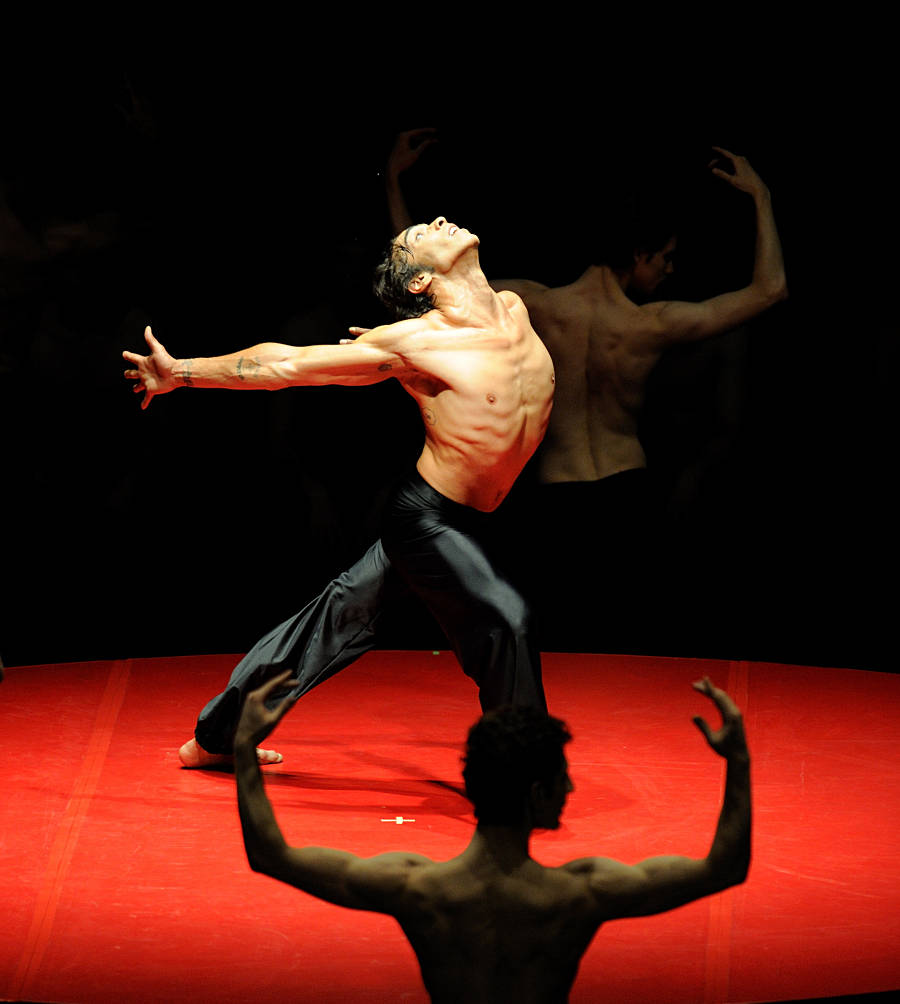 Most of all, the dramatic roles, like Onegin, Othello or Kowalski, are emotionally draining and require some time to get out of the respective mind frame afterwards. “It might sound weird, but I used to go up to the dressing room and do a 40 minute work out to get rid of that energy.” Physical work outs are his regular add on program to stay in shape and keep himself at the company’s high standard. Having a roster full of great principals allows Anderson – and that’s highly appreciated by the dancers – to send them abroad to galas or for guesting as often as possible. “Reid supports and encourages us, he knows we’ll come back enriched.” The sought-after Reilly was Evelyn Hart’s Romeo as well as her dancing partner in her farewell performance, danced Kowalski at Alessandra Ferri’s side and partnered Greta Hodgkinson in Cranko’s Shrew. Experiences that will stay with him forever, he says.
Most of all, the dramatic roles, like Onegin, Othello or Kowalski, are emotionally draining and require some time to get out of the respective mind frame afterwards. “It might sound weird, but I used to go up to the dressing room and do a 40 minute work out to get rid of that energy.” Physical work outs are his regular add on program to stay in shape and keep himself at the company’s high standard. Having a roster full of great principals allows Anderson – and that’s highly appreciated by the dancers – to send them abroad to galas or for guesting as often as possible. “Reid supports and encourages us, he knows we’ll come back enriched.” The sought-after Reilly was Evelyn Hart’s Romeo as well as her dancing partner in her farewell performance, danced Kowalski at Alessandra Ferri’s side and partnered Greta Hodgkinson in Cranko’s Shrew. Experiences that will stay with him forever, he says.
“When I came to Stuttgart”, Reilly sums up, “I only knew it was a special place. I felt comfortable right away.” That is invariably the case.
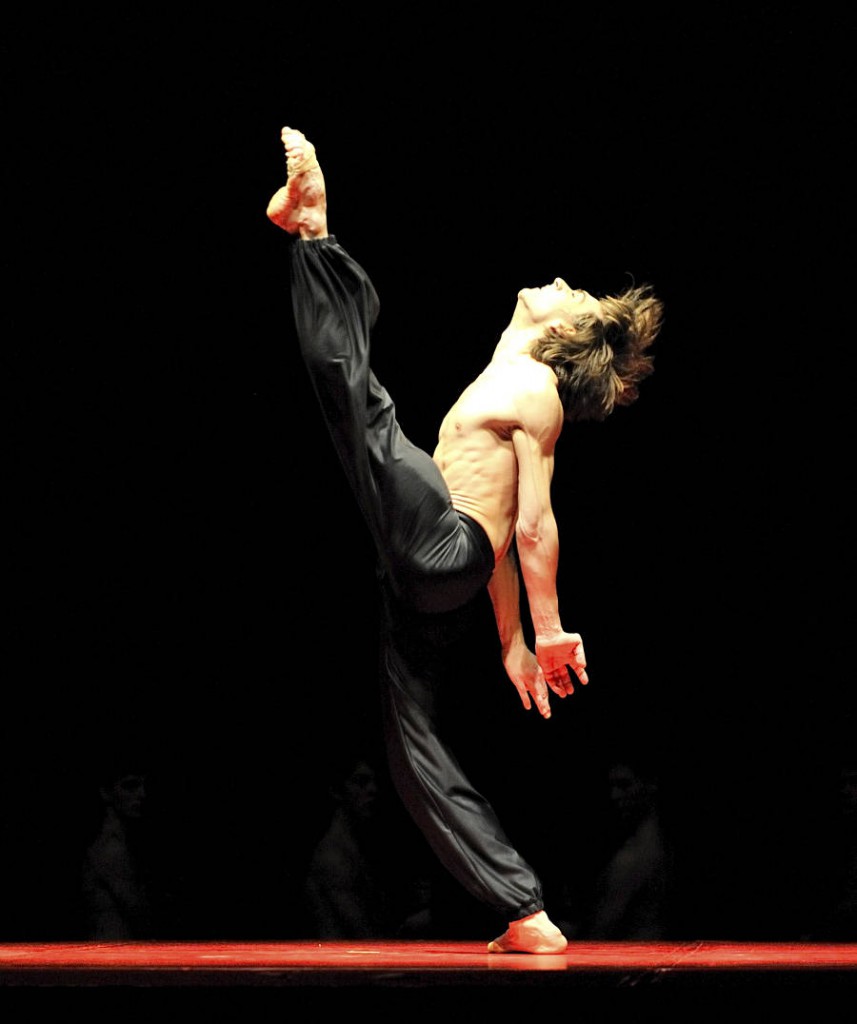 Born in Stuttgart Friedemann Vogel’s career with the company could have been a home match. But he’s probably the troupe’s most well-traveled dancer and its sedulous ambassador worldwide. Just back from the Teatro alla Scala, where he made his debut in Balanchine’s Diamonds with Polina Semionova, he currently is preparing Albrecht for the revival of Giselle in Stuttgart. Before, he had been in Paris for two shows in the Homage à Mauel Legris gala, dancing a pas de deux of MacMillan’s Manon and Itzik Galili’s Mono Lisa as modern counterpart with his Stuttgart colleague Maria Eichwald. Sometimes, he admits, when waking up in a hotel in the morning he wouldn’t know straight away in which town he actually was. However, regardless of where he is, he feels better the more he dances. “On stage one can hide nothing. You’re like an open book. It may sound odd, but I feel I’m being more myself, when the curtain rises. Being watched by everyone makes me feel more protected than doing the same in private.” Thus stage rehearsals in front of an empty auditorium might be strenuous.
Born in Stuttgart Friedemann Vogel’s career with the company could have been a home match. But he’s probably the troupe’s most well-traveled dancer and its sedulous ambassador worldwide. Just back from the Teatro alla Scala, where he made his debut in Balanchine’s Diamonds with Polina Semionova, he currently is preparing Albrecht for the revival of Giselle in Stuttgart. Before, he had been in Paris for two shows in the Homage à Mauel Legris gala, dancing a pas de deux of MacMillan’s Manon and Itzik Galili’s Mono Lisa as modern counterpart with his Stuttgart colleague Maria Eichwald. Sometimes, he admits, when waking up in a hotel in the morning he wouldn’t know straight away in which town he actually was. However, regardless of where he is, he feels better the more he dances. “On stage one can hide nothing. You’re like an open book. It may sound odd, but I feel I’m being more myself, when the curtain rises. Being watched by everyone makes me feel more protected than doing the same in private.” Thus stage rehearsals in front of an empty auditorium might be strenuous.
Vogel is the youngest of five brothers, who are all connected to art. One had been director of Hamburg’s Schauspielhaus, two are professional musicians and the firstborn, Roland Vogel, had also been a principal of Stuttgart Ballet.
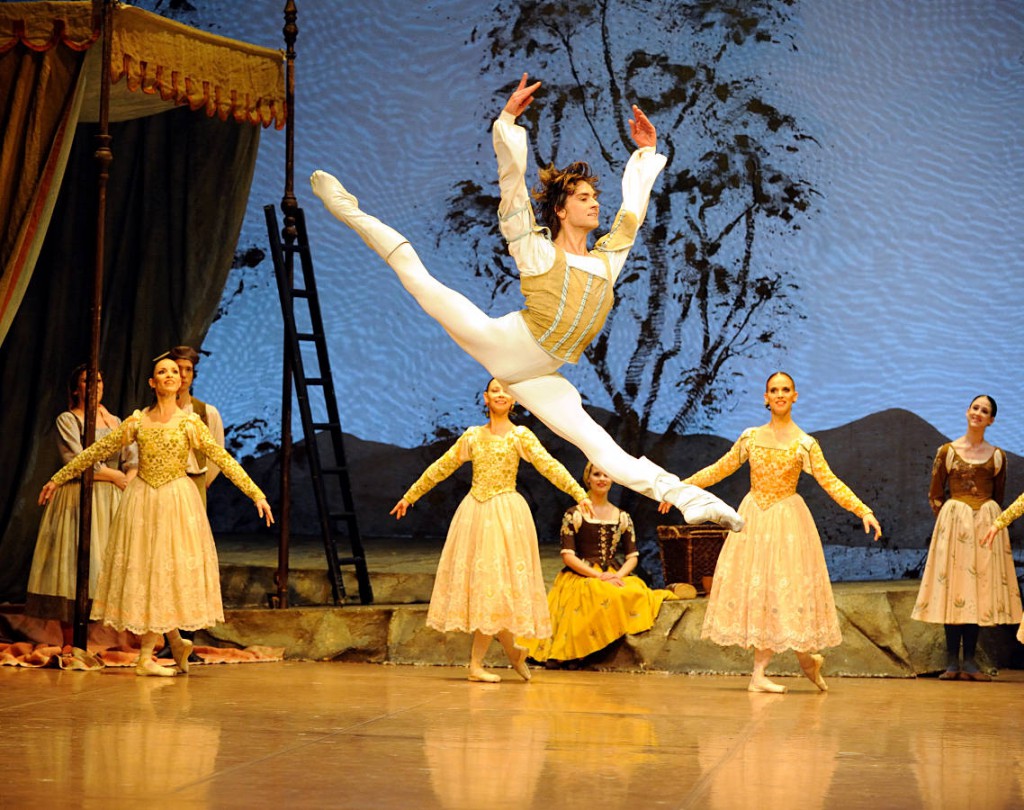
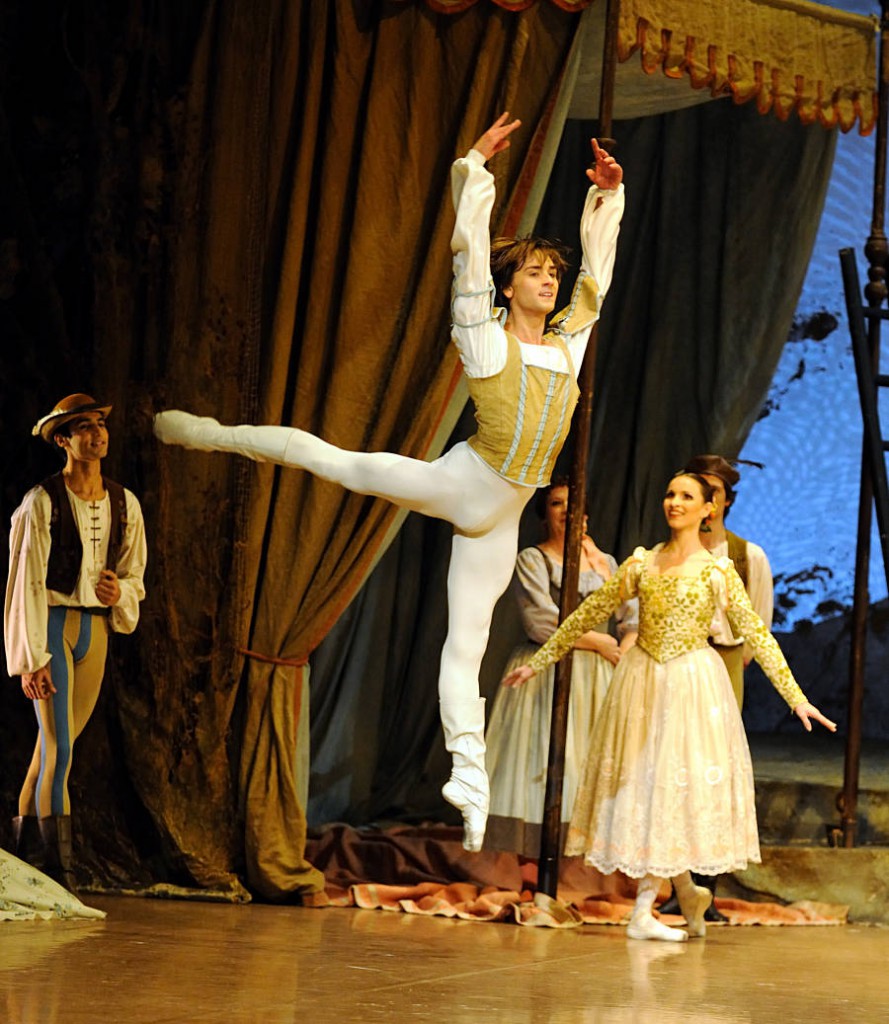 Friedemann Vogel watched his first ballets at age four or five and naturally grew up with the company and Marcia Haydée. He remembers that an old photo shows him as a little boy sitting on her lap. At age ten he enrolled at the John Cranko School. Five years later Vogel set off for Monaco, after receiving a scholarship to study with Marika Besobrasova at the Académie de Danse Classique Princesse Grasse. Besobrasova, ex-dancer of the Ballets Russes de Monte Carlo, closely connected to Nureyev and a treasured ballet mistress, was already eighty-years-old at that time. Strong in character and a true diva she had a mind of her own. She infused Vogel with inspiration and with her phenomenal knowledge and remained his mentor until her death in 2010.
Friedemann Vogel watched his first ballets at age four or five and naturally grew up with the company and Marcia Haydée. He remembers that an old photo shows him as a little boy sitting on her lap. At age ten he enrolled at the John Cranko School. Five years later Vogel set off for Monaco, after receiving a scholarship to study with Marika Besobrasova at the Académie de Danse Classique Princesse Grasse. Besobrasova, ex-dancer of the Ballets Russes de Monte Carlo, closely connected to Nureyev and a treasured ballet mistress, was already eighty-years-old at that time. Strong in character and a true diva she had a mind of her own. She infused Vogel with inspiration and with her phenomenal knowledge and remained his mentor until her death in 2010.
Taking part in the Stuttgart company’s summer training Vogel was invited by Anderson to join the ensemble after his graduation in Monte Carlo in the following year. Besobrasova would have loved to keep him longer under her wing, but Vogel, aged eighteen, took the offer and in 1998 returned to Stuttgart. Starting in the corps de ballet his career developed quickly. Having been in the fifth cast for Balanchine’s Themes and Variations Vogel suddenly found himself on stage in the leading role due to several injuries of colleagues. From then on the round of big roles began: Albrecht, Prince Désiré, Prince Siegfried and so on. Tall and blessed with beautiful proportions, Vogel has impeccable technique and ravishing elegance. When he was appointed principal in 2002, the company had two Vogel-brothers at the very front for a short time. After his retirement from stage, Roland headed to Monte Carlo to become ballet master at the Académie de Danse.
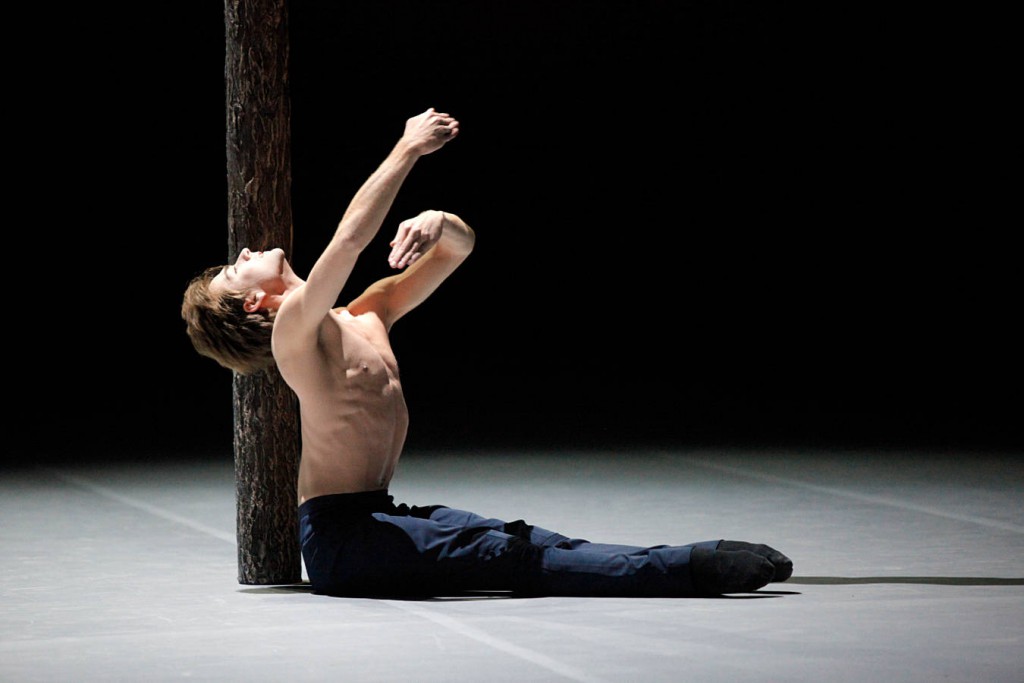
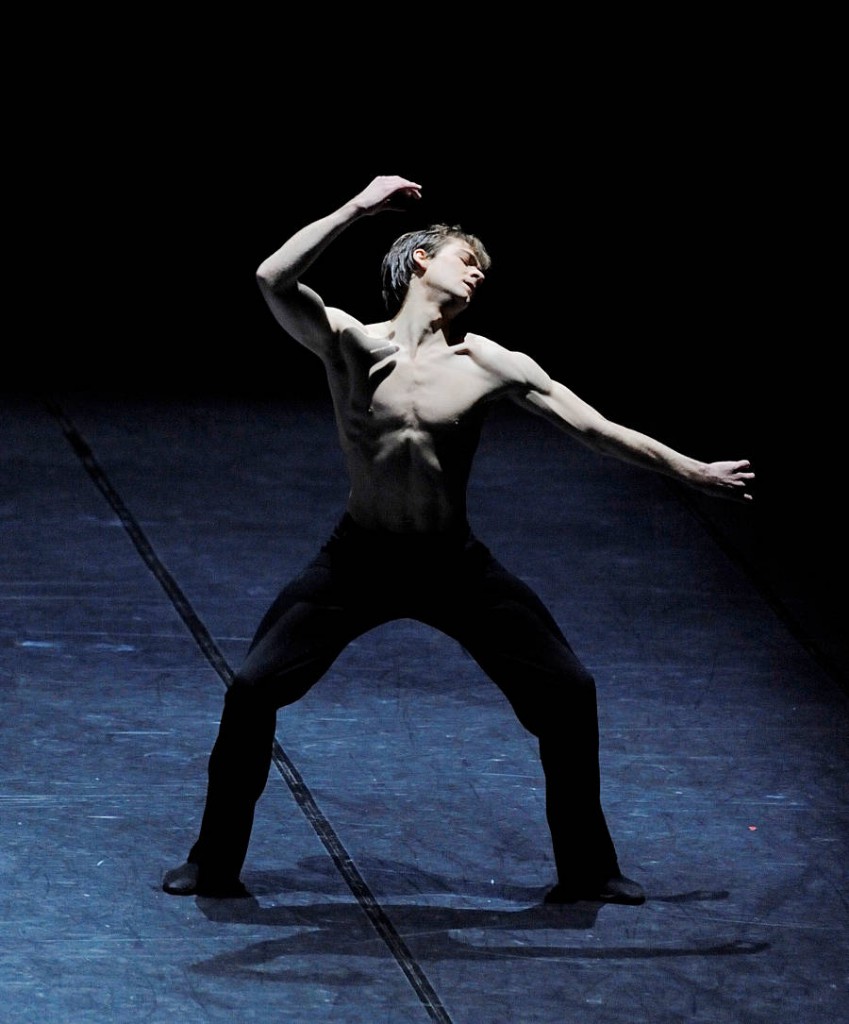 Albrecht is a role near and dear to Vogel. At age nineteen, it had been the first central character in a classical ballet for which he had been thoroughly prepared and coached. For three months he concentrated almost daily on it, thus gaining a profound foundation for future leads. Yet he still works to bring out further interesting nuances of Albrecht. Meanwhile there’s much less time to become familiar with other roles, but Vogel is a quick learner. Testing himself in new works and enlarging his repertory brings him forward, artistically as well as personally. That’s why guesting with other companies is so important. Equally essential to Vogel is to be involved in the creation of new roles as in Stuttgart’s new mixed program Wayfarers, which will premiere in April.
Albrecht is a role near and dear to Vogel. At age nineteen, it had been the first central character in a classical ballet for which he had been thoroughly prepared and coached. For three months he concentrated almost daily on it, thus gaining a profound foundation for future leads. Yet he still works to bring out further interesting nuances of Albrecht. Meanwhile there’s much less time to become familiar with other roles, but Vogel is a quick learner. Testing himself in new works and enlarging his repertory brings him forward, artistically as well as personally. That’s why guesting with other companies is so important. Equally essential to Vogel is to be involved in the creation of new roles as in Stuttgart’s new mixed program Wayfarers, which will premiere in April.
Vogel has a packed schedule, but he’s adept in managing his time and above all he’s centered on himself in the here and now. He radiates calmness while working step by step from one project to the other. The most rewarding, almost magical moments on stage are unpredictable and unrehearsable, he says.
After a gala in Helsinki, he’ll dance Romeo and Juliet with Alina Cojocaru at the Royal Albert Hall – he’s already looking forward to the huge stage – followed by two shows in Shanghai, a short trip to Chile to add Béjart’s Bolero for the Ballet de Santiago de Chile to his luggage, then closing the circle with Polina Semionova in Swan Lake at the Bolshoi again.
The article was published first in DanceView, Vol. 31, No. 2, Spring 2014. (Download)
| Links: | Stuttgart Ballet’s Homepage | |
| Photos: | Alicia Amatriain | |
| 1. | Alexander Jones (Petrucchio) and Alicia Amatriain (Katharina), “The Taming of the Shrew” by John Cranko, Stuttgart Ballet 2014 | |
| 2. | Alicia Amatriain, “Miniatures” by Douglas Lee, Stuttgart Ballet 2014 | |
| 3. | Alicia Amatriain (Tatiana) and Evan McKie (Onegin), “Onegin” by John Cranko, Stuttgart Ballet 2014 | |
| 4. | Jason Reilly (Othello) and Alicia Amatriain (Desdemona), “Othello” by John Neumeier, Stuttgart Ballet 2014 | |
| Elisa Badenes | ||
| 5. | Elisa Badenes (Katharina) and Daniel Camargo (Petrucchio), “The Taming of the Shrew” by John Cranko, Stuttgart Ballet 2014 | |
| 6. | Elisa Badenes (Katharina) and Daniel Camargo (Petrucchio), “The Taming of the Shrew” by John Cranko, Stuttgart Ballet 2014 | |
| 7. | Elisa Badenes (Kitri) and ensemble, “Don Quixote” by Maximilano Guerra, Stuttgart Ballet 2014 | |
| 8. | Elisa Badenes (Kitri) and ensemble, “Don Quixote” by Maximilano Guerra, Stuttgart Ballet 2014 | |
| 9. | Marijn Rademaker (The Master) and Elisa Badenes (Kabtorka), “Krabat” by Demis Volpi, Stuttgart Ballet 2014 | |
| 10. | Elisa Badenes and ensemble, “Big Blur” by Demis Volpi, Stuttgart Ballet 2014 | |
| Daniel Camargo | ||
| 11. | Daniel Camargo (Basilio) and ensemble, “Don Quixote” by Maximilano Guerra, Stuttgart Ballet 2014 | |
| 12. | Elisa Badenes (Kitri), Daniel Camargo (Basilio) and ensemble, “Don Quixote” by Maximilano Guerra, Stuttgart Ballet 2014 | |
| 13. | Daniel Camargo (Petrucchio) and ensemble, “The Taming of the Shrew” by John Cranko, Stuttgart Ballet 2014 | |
| 14. | Daniel Camargo and Elisa Badenes, “Little Monsters” by Demis Volpi, Stuttgart Ballet 2014 | |
| 15. | Daniel Camargo (The Chosen One), “Le Sacre du Printemps” by Glen Tetley, Stuttgart Ballet 2014 | |
| Jason Reilly | ||
| 16. | Jason Reilly (Othello) and Marijn Rademaker (Iago), “Othello” by John Neumeier, Stuttgart Ballet 2014 | |
| 17. | Jason Reilly (Armand Duval) and Alicia Amatriain (Marguerite Gautier), “Lady of the Camellias” by John Neumeier, Stuttgart Ballet 2014 | |
| 18. | Alicia Amatriain (Desdemona) and Jason Reilly (Othello), “Othello” by John Neumeier, Stuttgart Ballet 2014 | |
| 19. | Jason Reilly (Armand Duval) and Alicia Amatriain (Marguerite Gautier), “Lady of the Camellias” by John Neumeier, Stuttgart Ballet 2014 | |
| 20. | Jason Reilly (Onegin) and Sue Jin Kang (Tatiana), “Onegin” by John Cranko, Stuttgart Ballet 2014 | |
| 21. | Jason Reilly, “Mono Lisa” by Itzik Galili, Stuttgart Ballet 2014 | |
| 22. | Jason Reilly, “Bolero” by Maurice Béjart, Stuttgart Ballet 2014 | |
| Friedemann Vogel | ||
| 23. | Friedemann Vogel, “Bolero” by Maurice Béjart, Stuttgart Ballet 2014 | |
| 24. | Friedemann Vogel (Prince Siegfried) and ensemble, “Swan Lake” by John Cranko, Stuttgart Ballet 2014 | |
| 25. | Friedemann Vogel (Prince Siegfried) and ensemble, “Swan Lake” by John Cranko, Stuttgart Ballet 2014 | |
| 26. | Friedemann Vogel, “Fancy Goods” by Marco Goecke, Stuttgart Ballet 2014 | |
| 27. | Friedemann Vogel (Orlando), “Orlando” by Marco Goecke, Stuttgart Ballet 2014, © Ulrich Beuttenmueller | |
| 28. | Friedemann Vogel (Albrecht) and ensemble, “Giselle” after Jean Coralli, Jules Perrot and Marius Petipa, Stuttgart Ballet 2014 | |
| all photos (except no.27) © Stuttgart Ballet 2014 | ||
| Editing: | George Jackson, Laurence Smelser, Alexandra Tomalonis |
